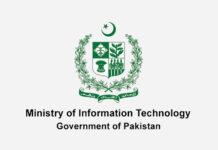“To state that the most expensive drug is one that is needed but not available would be a truism”
These were the words in which Justice Babar Sattar of the Islamabad High Court delivered a delicately scathing indictment of the federal government’s continued efforts to exert control over drug prices in Pakistan. The historic verdict of the IHC was delivered on the 30th of October as the result of a writ petition filed by Getz Pharma against the Federal Government.
But it was not Getz Pharma alone. Nearly the entire pharmaceutical industry in Pakistan including ICI Pakistan Ltd, GlaxoSmithKline Pakistan Ltd, SAMI Pharmaceuticals Pvt Ltd and Indus Pharma Pvt Ltd had filed their own petitions, and this decision provides them the same relief as Getz Pharma.
What was the core issue? The government, as we all know, has long been involved in regulating drug prices in Pakistan for populist appeal. But since drug manufacturing is a private business, if pharma companies cannot sell at viable prices they end up with supply shortages. Of course, there is an argument to be made for regulation. Life saving drugs should be accessible to everyone, and this is a business where small margins should be encouraged and competition should be fostered to make pricing more competitive.
But this particular case revolves around existing laws. You see, there is a Maximum Retail Price (MRP) policy in Pakistan that was enacted for drugs in 2018. This policy governs how drugs are priced, but also has safeguards that allow drug manufacturers room to increase their prices during times of hardship. It was this core issue that led the pharma industry to the courts, and the government’s own law was what the IHC used to rule against them.
Of course, the core issue here is multifaceted: A government aiming to protect consumers but failing to adhere to its own pricing policies; a pharmaceutical sector teetering on the edge due to profitability concerns; and a national healthcare system stretched thin, where accessible pricing of essential drugs remains uncertain.
This ruling, along with recent developments, probes whether the government can balance these competing interests without collapsing under the weight of the country’s economic challenges.
Pakistan’s drug pricing structure, designed to protect consumers, has increasingly ignored the economic realities faced by manufacturers who are left bearing the brunt of inflationary pressures without government mitigation. In early 2023, 70 pharmaceutical companies issued a plea to the Ministry of Health Services and DRAP, highlighting the immediate threat posed by fixed MRPs. These companies warned of possible industry collapse without price adjustments that reflect inflation and ensure sustainable profitability, critical for addressing drug scarcity.
This landmark decision shines a stark light on Pakistan’s urgent need for an updated approach to MRP policy, one that ensures affordability for consumers while preserving the viability of manufacturers.
At its heart, it raises a critical question. As prices rise and government intervention lags, will essential medicines remain within reach for Pakistan’s vulnerable populations?
So how did we get to this point?
Amid the spiraling dollar-rupee inflation and global supply chain disruptions since 2020, Pakistan’s pharmaceutical industry has been facing unprecedented financial pressure. For Getz Pharma and many others, the rising cost of imports, as over 80% of the raw materials used in drug production are imported, has forced a steep increase in production expenses.
Many small manufacturers, lacking the financial cushion to absorb these costs, were compelled to shut down operations, as over 200 small manufacturing plants had to close due to untenable production costs. The impact was felt even more acutely as, despite these challenges, the government maintained its fixed MRP policy, prioritizing consumer access to affordable medicines over industry sustainability.
Against this backdrop, Getz Pharma sought an MRP increase under the “hardship” clause of the Drug Pricing Policy, 2018. Under this provision in early 2022, Getz applied for an MRP increase through the DRAP to ensure it could continue manufacturing at a time it is becoming unfeasible to produce.
“The drug in question is a lifesaving drug used in hospitals to provide anesthesia to children, and another form of this drug was already being sold in the market for Rs19,000,” says Feisal Naqvi, legal counsel for Getz Pharma.
The name of the Getz-manufactured drug for which a hardship MRP was requested and found that it was ‘Sevof’ whose price was set at Rs5,526 by DRAP in 2019. Despite its DRAP-approved MRP-increase to Rs 17,571, on account of economic hardship, which the government later rejected in 2022, an alternative called ‘Sevofluorane’ was already being sold at around Rs19,000.
But as Naqvi explains, the hardship MRP requested by Getz, and approved by the Drug Pricing Committee, was much lower at roughly Rs17,000. This would have offered a more affordable alternative in the market.
Yet, even as the economic situation continued to worsen, the government failed to respond within its mandated time, leaving Getz without recourse and unable to raise prices by the allowed 10% in the absence of a timely response. This delay underscored the growing discontent within the industry, as pharmaceutical companies bore the burden of inflation alone while consumers faced potential shortages of critical medicines.
Although the government acknowledged these issues in May 2023, granting a one-time allowance for manufacturers to increase MRPs for essential drugs by up to 70% of CPI (capped at 14%) and non-essential drugs by CPI (capped at 20%), this move was viewed as too little, too late for an industry that had long voiced its grievances. The policy shift did provide some relief: pharmaceutical earnings rose by 70% to Rs13.3 billion in FY24, and sales increased by 19% YoY to Rs286 billion, with previously scarce medicines reappearing on shelves. Additionally, gross margins improved, better reflecting the industry’s increased costs.
In February 2024, the Ministry of National Health Services also responded by increasing MRP for 146 essential drugs and deregulating non-essential drug prices. This change allowed companies to adjust prices based on CPI inflation with specific caps, offering some relief to address supply challenges.
As a result, the start of the current fiscal year saw further gains with a 560% YoY growth to Rs5.6 billion in Q1FY25, attributed to a move that mirrors India’s approach to balancing free-market principles with price controls. This deregulation, however, only partially alleviates the financial strain facing the industry, as the MRP remains fixed for essential drugs.
Despite the government’s latest intervention, cost pressures remain high, with gross margins rising from 26% in FY23 to 30% in FY24, partly due to reduced raw material costs for some drugs. Meanwhile, selling and administrative expenses grew by 24% and 12% in line with inflation trends, and finance costs surged by 23% due to the increase in KIBOR rates from 18% to 22%
This brings us to the present legal challenge, where the recent judgment in favor of Getz Pharma calls for a critical examination of the MRP framework, its implications for industry stability, and the accessibility of essential medicines for consumers.
How does MRP and its legislation work?
MRP is a form of price-control inconsistent with the free-market system, but a much-needed form of government intervention in emerging economies like Bangladesh, India, Pakistan and Sri Lanka. This not only protects consumers and provides them access to medicines at prices affordable to them, but also protects the domestic industry as foreign players are prevented from dumping artificially lower price rates.
This system also pays little regard to retailers as they lose control over what profits they make, which compounds the existence of a black market given that at times of shortage, smuggled and spurious drugs are sold at 3 to 4 times the prices.
In emerging economies like Pakistan, where there’s two categories of drugs in terms of pricing, ‘Essential Medicines’ and ‘All other drugs’, an MRP system has been used to shift the burden of increased inflation from the consumers to the producers, with minimal government intervention to build manufacturer capacity to fulfill what should be the government’s responsibility.
Prior to the government’s commitment earlier this year to deregulate non-essential medicines, there existed, and still exists until further amendments, 3 unique categories of MRP, under the Drug Pricing Policy.
Firstly, Annual Adjustments (Clause 7) provide a controlled yet predictable mechanism for price increases across most drugs. These adjustments are tied to inflation, allowing MRPs to rise annually based on a formula that factors in economic indicators like currency depreciation. This measure helps cover manufacturers’ rising costs in a manner that remains affordable for consumers.
Secondly, New Entrants (Clause 8) addresses the pricing of new drugs entering the market. Here, DRAP sets MRPs by benchmarking prices in countries like India and Bangladesh, with the goal of encouraging innovation and fair competition while keeping prices aligned with regional standards.
Lastly and most importantly, Hardship Cases (Clause 9) offer an urgent response mechanism for price adjustments due to exceptional economic challenges, such as rapid currency depreciation or import cost spikes. This clause is essential for safeguarding the supply of critical drugs, allowing manufacturers to apply for MRP increases when production costs soar unexpectedly.
As per the governments own policies that led to the creation of DRAP, under the DRAP act 2012, and the Drug Act, 1976, the government has delegated this responsibility of determining prices to the Drug Pricing Committee, and therefore according to Naqvi and Justice Babar Sattar, bound by it in absence of a reasonable justification to reject it.
Did the Government act reasonably and responsibly amid Getz’s economic hardship?
In the recent judgment, Justice Babar Sattar criticized the federal government’s refusal to accept hardship MRP adjustments for Getz Pharma, emphasizing that this decision reflected a failure to follow its own established policies. This rejection, which came without adequate explanation or adherence to the Drug Pricing Policy’s provisions, cast serious doubts on the government’s commitment to ensuring both consumer affordability and accessibility to essential drugs.
“It’s simple. If the government has a policy, it must follow it. If it doesn’t wish to follow it, then it should change its policy. But in this case, the policy that safeguards my client still exists,” explains Naqvi.
This pointed remark underscores the core of the issue. The government has failed to act in accordance with Clause 9 of the Drug Pricing Policy, which explicitly outlines the procedure for hardship MRPs. By ignoring both the policy framework and the Drug Pricing Committee’s (DPC) recommendations, the government effectively undermined the principles of fair governance.
Justice Sattar observed that the government’s decision appeared arbitrary and unreasonable, lacking in both transparency and accountability. He noted that the Drug Pricing Committee, composed of industry experts, had recommended an adjusted MRP of Rs17,000 for Getz Pharma’s drug, a price notably lower than the Rs19,000 charged by a competing manufacturer.
This recommended adjustment would have not only provided a more affordable alternative but also ensured the continued availability of the drug. In rejecting this without valid reasons, the government failed to balance consumer affordability with accessibility, a critical responsibility in healthcare policy.
Furthermore, Justice Sattar pointed out that by acting inconsistently with its declared guidelines, the government destabilizes the pharmaceutical sector, creating uncertainty for manufacturers and threatening the supply of essential medications to the public.
In a healthcare landscape where access to lifesaving drugs is paramount, this judgment underscores the necessity for the government to act responsibly, transparently, and in alignment with established policy. The arbitrary handling of Getz Pharma’s hardship request highlights the risk of bureaucratic inertia overriding the core purpose of policies meant to safeguard both consumer welfare and industry viability.
How does regulation impact the economy?
The complex web of regulations governing drug prices in Pakistan has far-reaching economic implications, affecting various stakeholders. Lets look at its impact on each stakeholder, including the government itself, to better understand the challenges and economic distortions created by inconsistent and stringent price controls:
(i) Producers: rising costs without mitigations
Pharmaceutical manufacturers in Pakistan face an uphill battle to sustain operations amidst mounting production costs and volatile exchange rates. With 80% of raw materials imported, currency devaluation significantly raises costs, particularly for multinationals who already operate on thinner margins due to regulatory price caps. The government’s refusal to adjust MRPs in line with inflationary pressures and currency fluctuations leaves manufacturers with few options.
As a result, multinational companies are gradually exiting the market, as seen in previous financial disclosures, prior to the notification surrounding deregulation of non-essential medicines, where three publicly listed pharmaceutical companies reported losses of Rs600 million, Rs500 million, and Rs300 million, respectively. This exodus not only diminishes competition but also disrupts the supply of essential drugs, putting further strain on the healthcare sector.
(ii) Retailers: diminished profits, increasing risk
For retailers, the regulated MRP limits profit margins, making it financially unrewarding to stock and sell certain drugs. In a low-margin environment, pharmacies and medical stores find little incentive to prioritize medicines with stringent price caps. This situation is exacerbated during times of shortage when demand is high, yet legal channels of profit are constrained.
Consequently, the rigid pricing policies inadvertently encourage a black market, where unofficial channels sell these scarce drugs at unaffordable rates, undermining regulated prices. Retailers, thus, operate in an environment where potential profits are not only constrained by regulation but also siphoned off by illicit traders, leading to a fragmented and inefficient supply chain.
(iii) Consumers: limited access and the rise of the black market
The intended purpose of price controls is to make medicines affordable for consumers. However, the current regulatory structure often has the opposite effect, limiting the availability of essential drugs and pushing desperate consumers toward black-market alternatives.
In times of scarcity, medicines regulated by strict MRPs are often unavailable in legal retail stores but can be found on the black market at inflated prices, sometimes three to four times the controlled MRP. For low-income consumers, this creates a heartbreaking dilemma: pay exorbitant black-market rates or forgo potentially lifesaving medication.
The regulations intended to protect consumers from price gouging have thus inadvertently made medicines both unaffordable and inaccessible, undermining the very goal of consumer protection.
(iv) Government: economic leakage and burdened imports
The government’s stance on maintaining low drug prices aims to safeguard consumer interests, but it simultaneously creates an unintended economic burden. By discouraging local production through stringent price caps, the government increases dependency on imported medicines, which in turn puts additional pressure on foreign reserves.
The regulatory environment has created a reliance on imports not only for raw materials but, increasingly, for finished drugs as well. As local producers find it financially unsustainable to operate, import bills rise, exacerbating the balance of payments issue. Moreover, the lack of policy flexibility means the government must deal with increasing black-market activity and the resultant loss in tax revenue, further straining public finances.
In sum, the rigid MRP regulation, while well-intentioned, triggers a cascade of economic consequences. Without adapting the regulatory framework to address these market realities, Pakistan risks deepening the healthcare crisis, driving manufacturers away, increasing the black market’s influence, and overburdening its already fragile economy.
The Public Health Paradox: do price controls limit access?
While MRP controls are meant to keep essential medicines affordable, they often result in unintended shortages, leaving patients without critical drugs. The reliance on imports means that fluctuations in foreign exchange and rising customs duties significantly impact production costs. With MRPs fixed by the government, manufacturers face constraints in adjusting prices to reflect these higher costs, leading some companies to cut back or withdraw products altogether.
For patients with chronic illnesses, the implications are severe. Limited production and market exits have led to recent shortages, pushing many consumers towards black markets or without any medication. In a country where healthcare spending is less than 3% of GDP, these price controls are squeezing both access and affordability, creating a cycle of artificial scarcity.
Other emerging economies have adopted flexible pricing for non-essential drugs, focusing controls solely on essential medicines. Adopting a similar approach could allow Pakistan to protect public health without stifling the market, ensuring that lifesaving medicines remain accessible even in times of economic instability.
The recent developments
The recent price adjustments for essential drugs and the deregulation of non-essential medicines could mark a turning point for Pakistan’s pharmaceutical sector. As the government has recently signaled deregulation, approving higher MRPs for 146 essential drugs, while giving companies the freedom to price non-essential drugs, it promises to boost profitability, with gross margins rising from 26% in FY23 to 30% in FY24, and a further surge anticipated as interest rates decline.
However, the broader question remains whether these steps indicate a genuine shift in government policy or are simply temporary measures. Industry experts have previously emphasized Pakistan’s lack of domestic biotechnology infrastructure, contrasting sharply with India’s 300 and China’s 3,000 biotechnology plants. The absence of R&D facilities and API (Active Pharmaceutical Ingredient) production not only limits the industry’s growth but also keeps it reliant on expensive imported raw materials.
Dr. Khurran Hussain from Getz Pharma previously proposed that the government tap into the Central Research Fund, worth five billion rupees, to develop local R&D facilities and promote public-private partnerships. Such measures could pave the way for innovation and reduce import dependency. This would mirror the buffer-stock protections seen in the agricultural sector, where Minimum Support Prices (MSPs) safeguard farmers from market fluctuations.
As healthcare spending in Pakistan hovers below 3% of GDP, the IHC’s recent judgment underscores the urgent need for a balanced approach in drug pricing policy. This decision compels the government to rethink how it supports both consumer access and industry viability, key pillars that are currently misaligned. While recent measures like MRP adjustments and deregulation of non-essential drugs offer hope, they may only scratch the surface of deeper systemic issues in Pakistan’s pharmaceutical sector.
Will these reforms foster a competitive, innovation-driven industry, or are they simply short-term remedies? The true test lies in the government’s commitment to honoring the IHC’s ruling by establishing clear, actionable support for producers facing economic hardships. A genuine shift in policy could ensure a resilient supply chain for essential medicines, safeguarding the health of hundreds of millions while reinforcing the industry’s foundation.
























